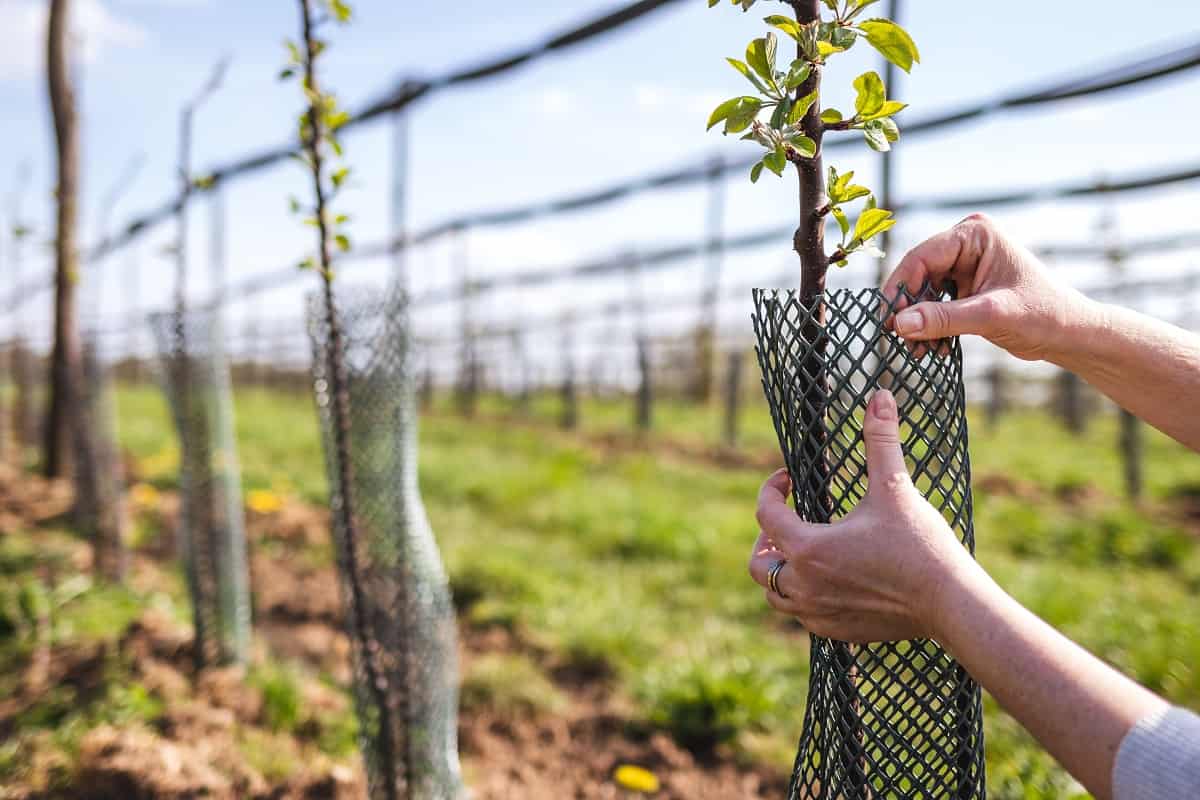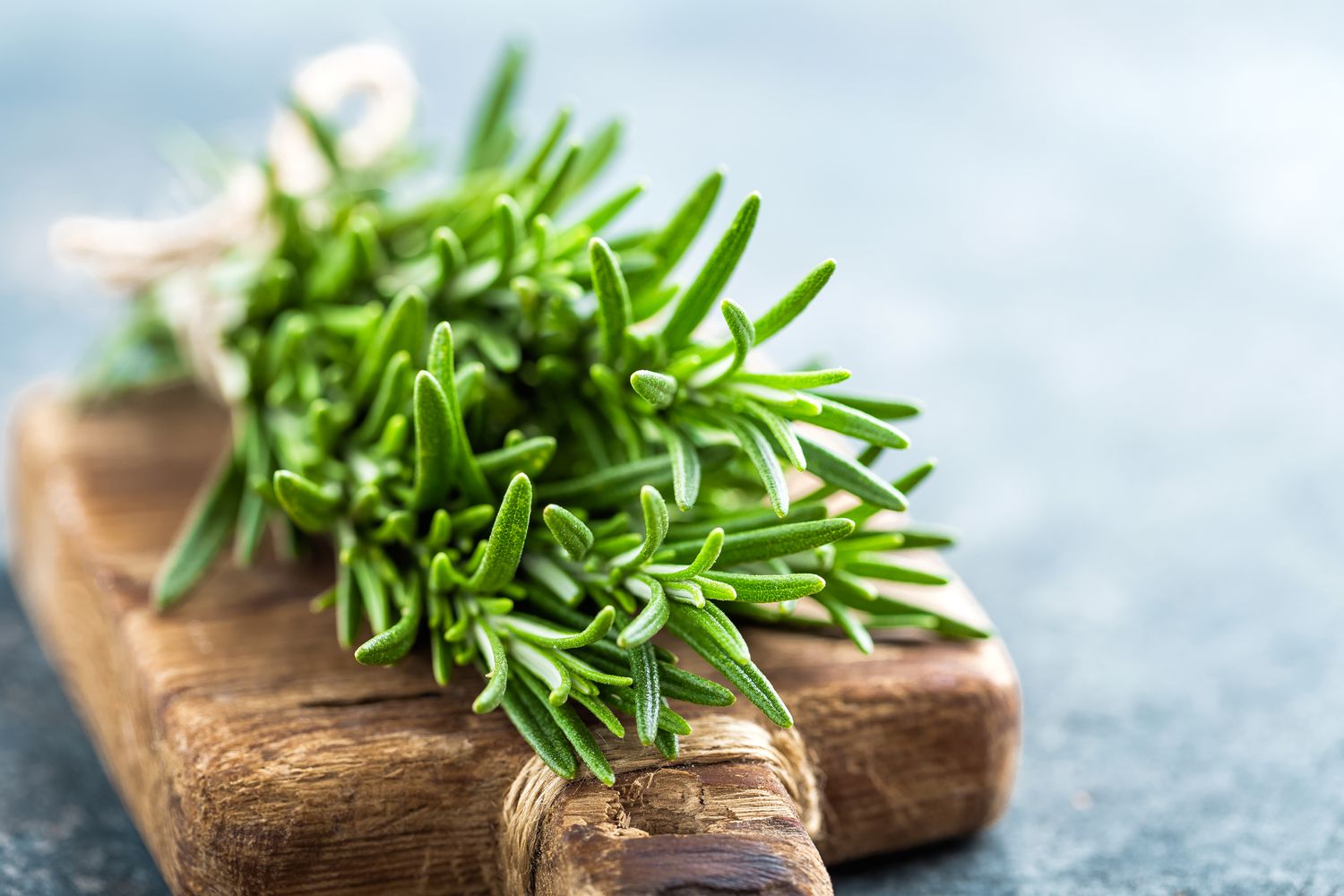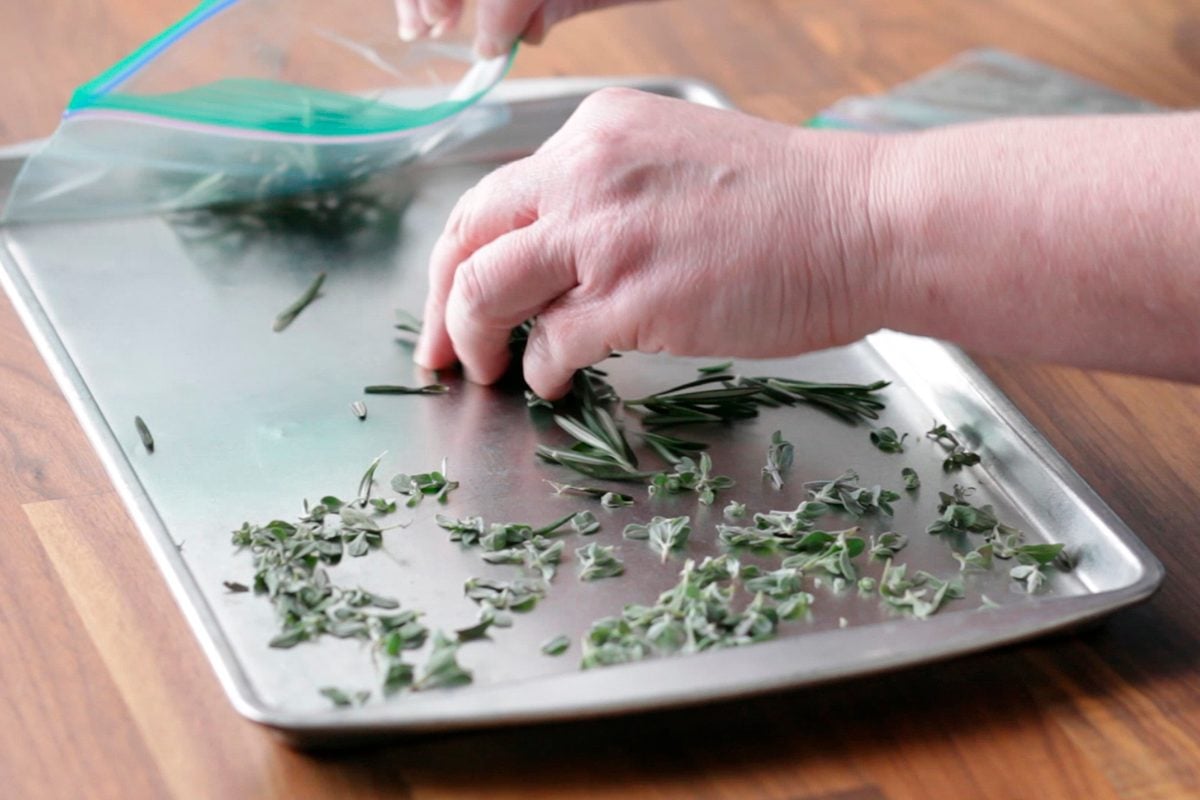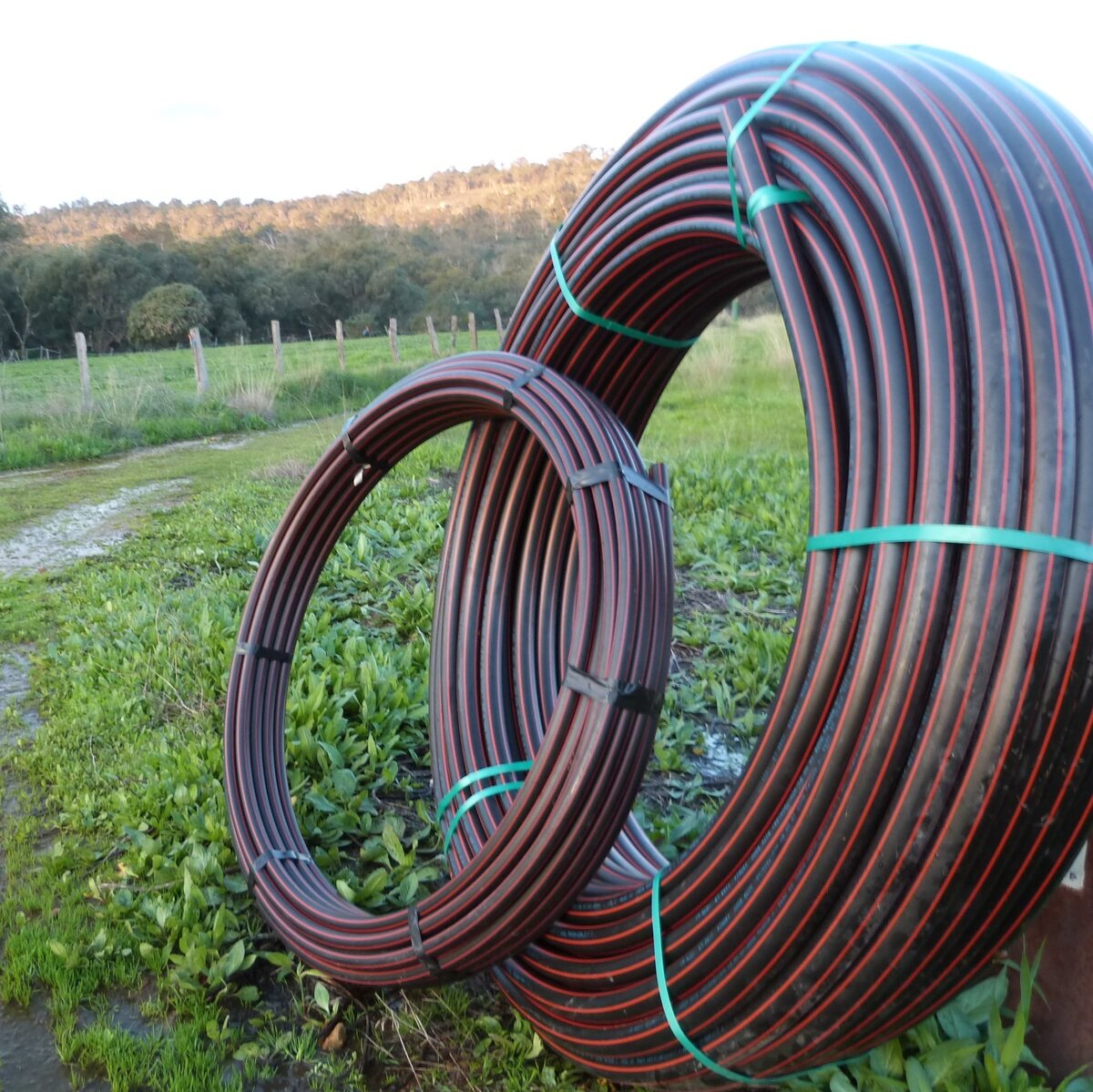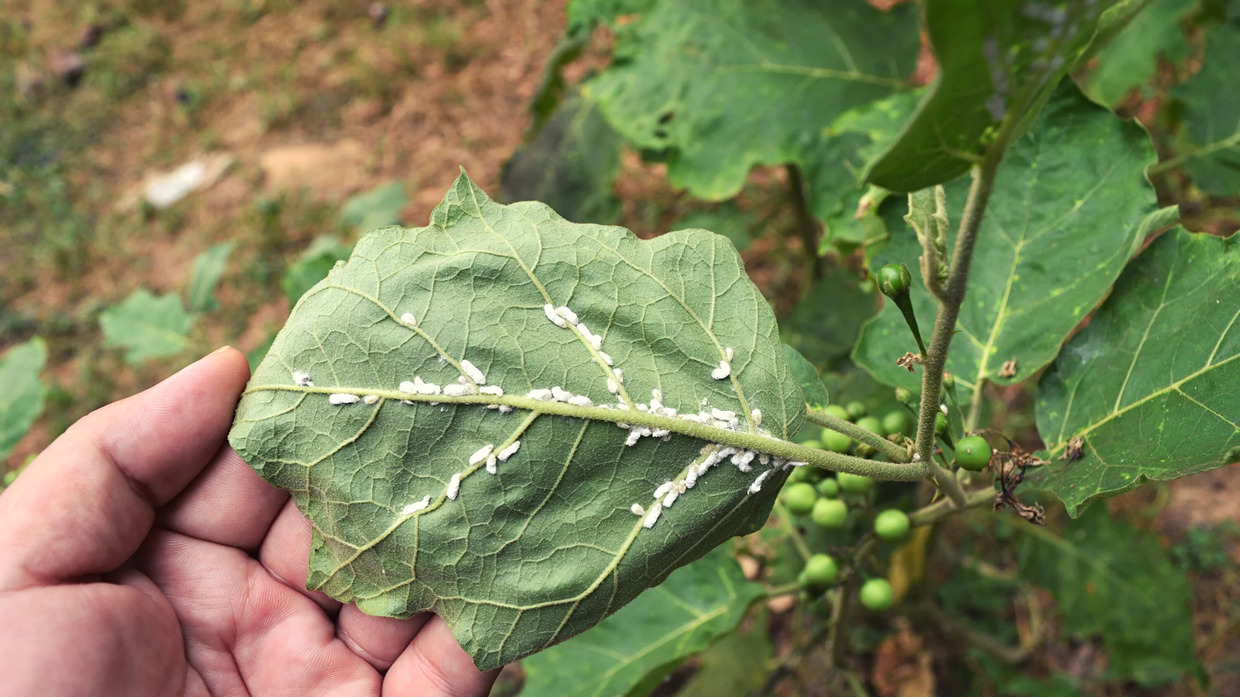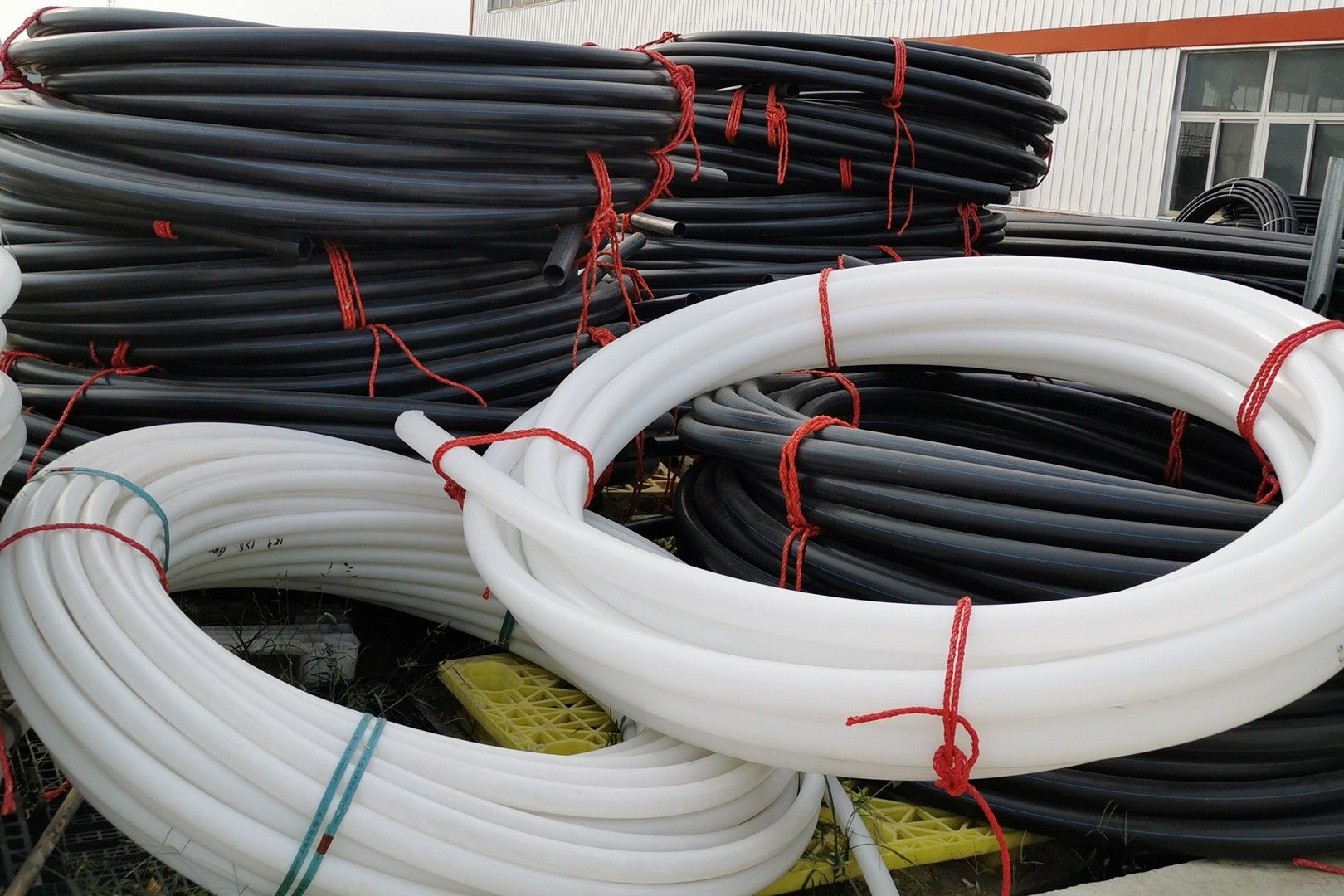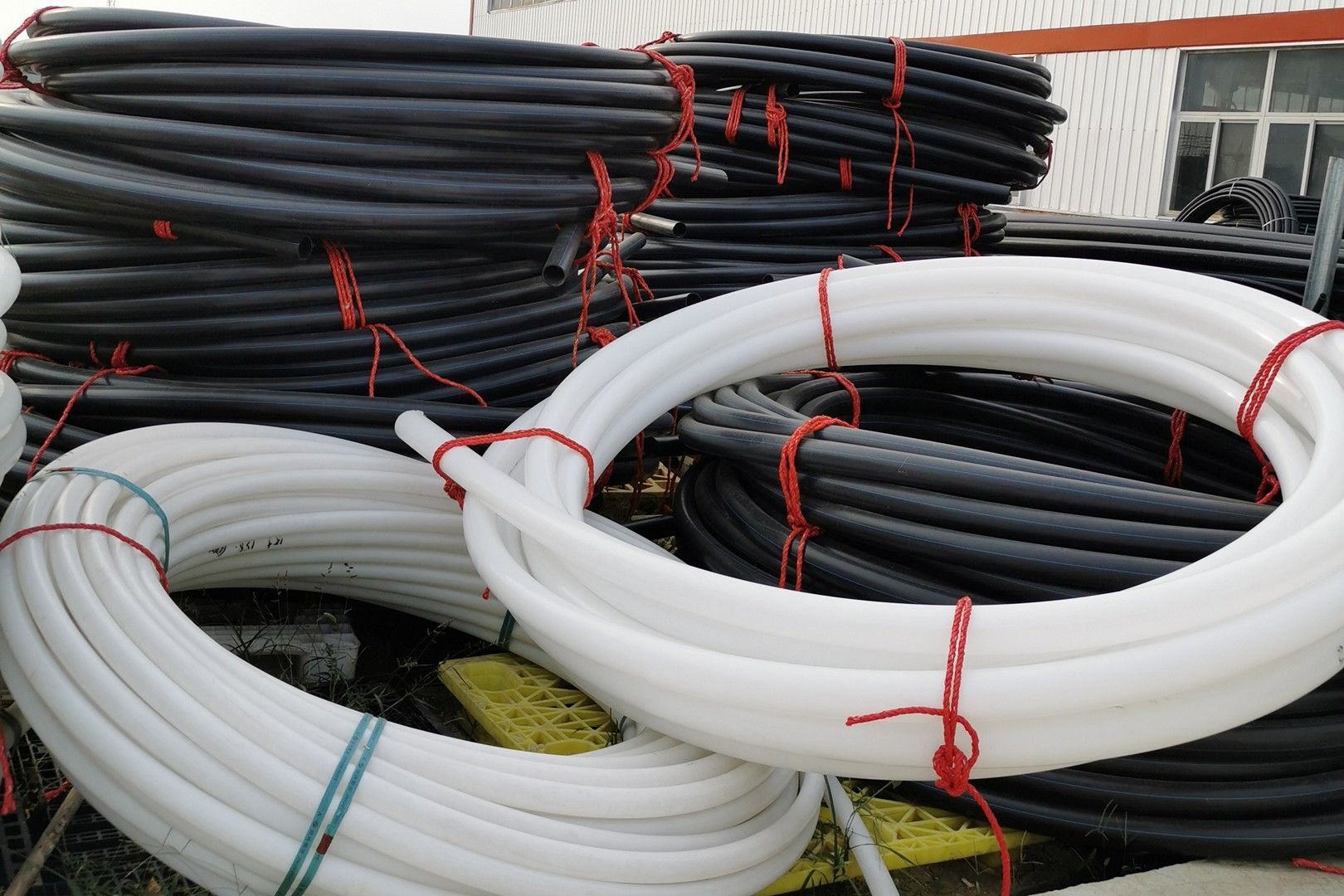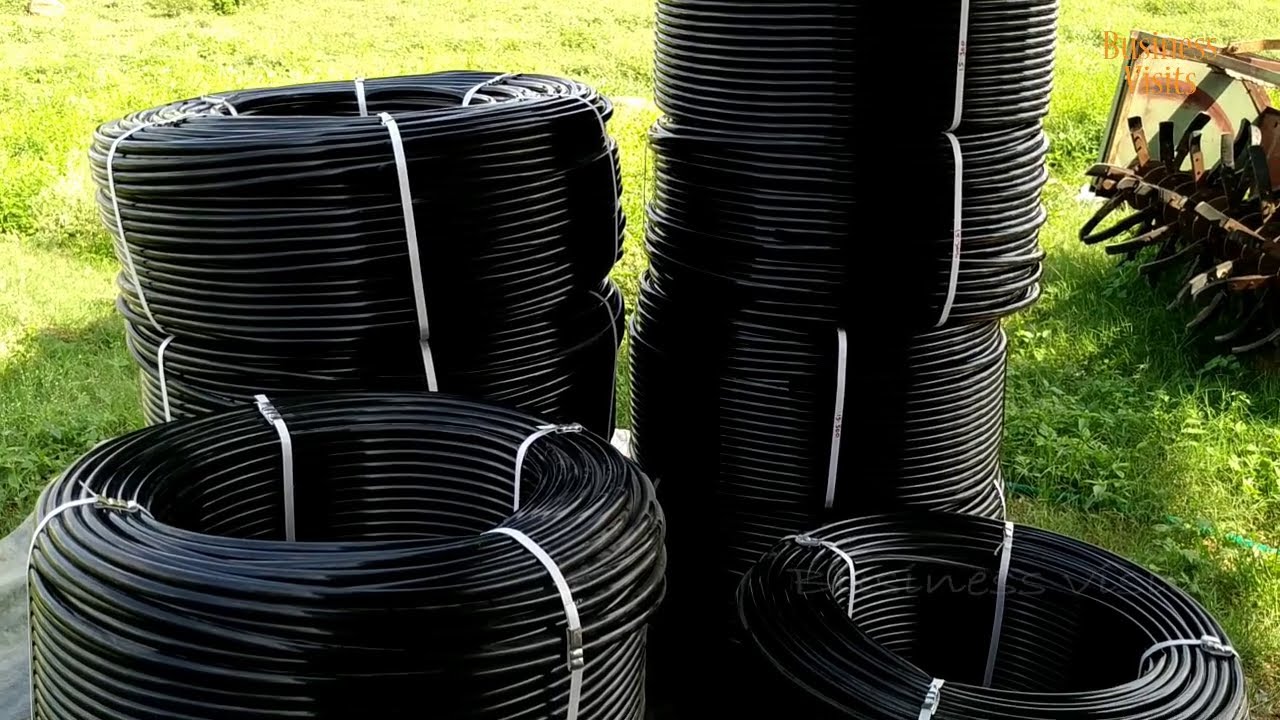Home>Gardening Techniques>DIY Projects>How To Keep Irrigation Pipes From Freezing
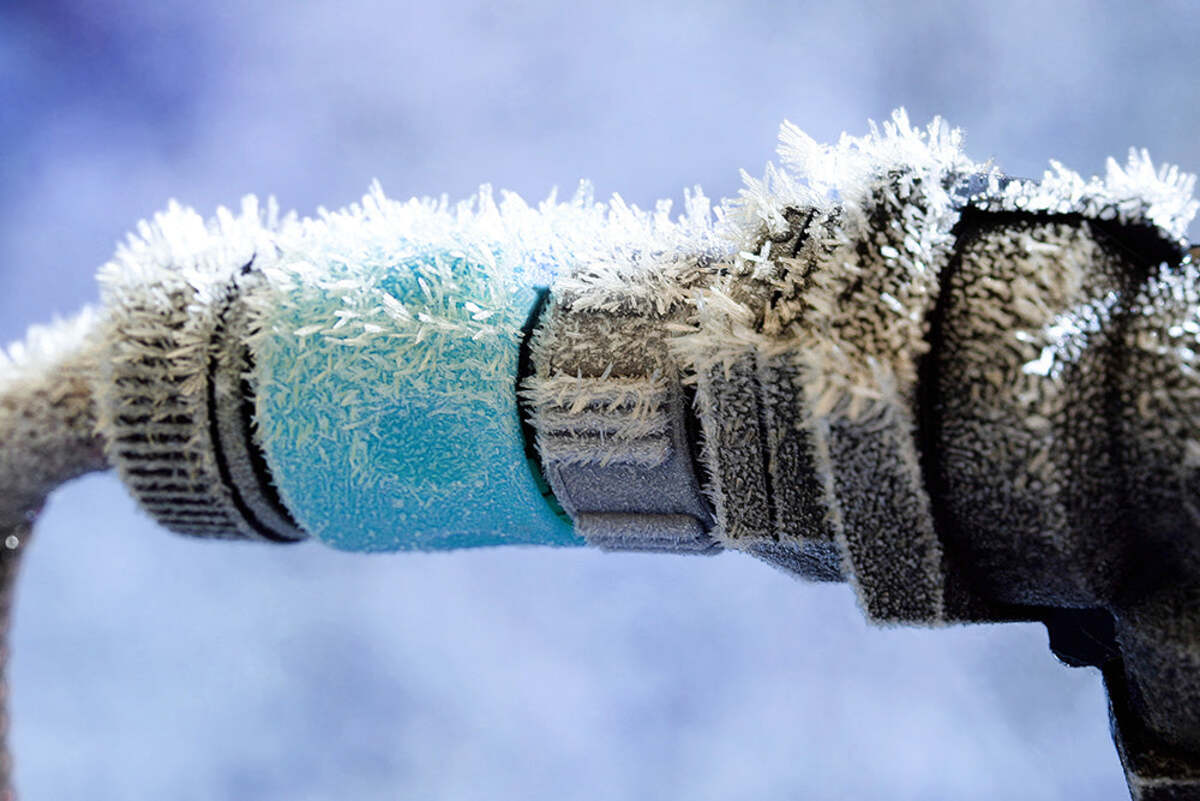

DIY Projects
How To Keep Irrigation Pipes From Freezing
Modified: January 22, 2024
Learn how to prevent your irrigation pipes from freezing with these simple and effective DIY projects. Keep your system running smoothly all winter long!
(Many of the links in this article redirect to a specific reviewed product. Your purchase of these products through affiliate links helps to generate commission for Chicagolandgardening.com, at no extra cost. Learn more)
Table of Contents
- Introduction
- Understanding the Risks of Freezing Irrigation Pipes
- Choosing the Right Pipe and Insulation Materials
- Properly Installing Insulation on Irrigation Pipes
- Using Heat Tape or Heating Cables for Extra Protection
- Draining and Winterizing Irrigation System
- Monitoring and Maintaining Insulation Throughout Winter
- Conclusion
Introduction
Welcome to the world of DIY projects! As a homeowner, there’s nothing more rewarding than taking on projects around your house and accomplishing them with your own two hands. From fixing a leaky faucet to building a deck, DIY projects allow you to save money, express your creativity, and increase the value of your home.
One area of DIY projects that often gets overlooked is the world of irrigation systems. Whether you have a small garden or a large yard, having a properly functioning irrigation system is crucial for maintaining a healthy and vibrant landscape. However, when winter comes around, the risk of freezing pipes poses a threat to the effectiveness of your irrigation system.
In this article, we will explore the various methods and techniques you can employ to keep your irrigation pipes from freezing during the winter months. We will discuss the importance of understanding the risks associated with freezing pipes, the types of pipes and insulation materials you should consider, the proper installation of insulation on your irrigation pipes, the use of heat tape or heating cables for extra protection, the process of draining and winterizing your irrigation system, and the importance of monitoring and maintaining insulation throughout the winter season.
By following these guidelines and implementing the appropriate measures, you can ensure that your irrigation system remains in optimal condition throughout the winter and is ready to go when spring arrives.
Understanding the Risks of Freezing Irrigation Pipes
When temperatures drop below freezing, the water inside your irrigation pipes can expand and cause them to freeze. This can lead to a range of issues, including burst pipes, damage to your irrigation system, and costly repairs. Understanding the risks associated with freezing irrigation pipes is essential in order to take the necessary precautions and protect your system.
One of the main risks of freezing pipes is water expansion. As water freezes, it expands in volume, exerting pressure on the walls of the pipes. This increased pressure can cause the pipes to crack or burst, leading to leaks and loss of water. Additionally, the expansion of frozen water can block the flow of water through the pipes, rendering your irrigation system ineffective.
Another risk of freezing pipes is the potential damage to irrigation components. When water freezes inside sprinkler heads, valves, or other irrigation system parts, it can cause them to crack or break. This damage can result in the need for replacement parts or even the entire system, adding significant costs to your budget.
Furthermore, freezing pipes can disrupt the water supply to your plants and lawn. If the pipes in your irrigation system freeze, water cannot reach the intended areas, leading to dehydration of plants and damage to your landscape. This can have negative effects on the health and vitality of your plants, as well as the overall appearance of your yard.
It is also important to note that freezing pipes can cause problems even after the thawing process. When the frozen water inside the pipes melts, it can result in leaks and water damage to your property. This can lead to mold and mildew growth, structural damage, and the need for extensive repairs.
To mitigate these risks, it is crucial to take preventative measures to protect your irrigation pipes from freezing. By understanding the potential consequences, you can prioritize the necessary steps to keep your system safe and functional during the winter months.
Choosing the Right Pipe and Insulation Materials
When it comes to ensuring the freezing protection of your irrigation pipes, choosing the right pipe and insulation materials is essential. The type of pipe and insulation you select can make a significant impact on the effectiveness of your winterization efforts.
Firstly, consider the material of the pipes themselves. There are several options available, including polyvinyl chloride (PVC), high-density polyethylene (HDPE), and flexible polyethylene tubing (PEX). PVC pipes are commonly used for above-ground applications and are resistant to freezing and cracking. HDPE pipes are suitable for both above-ground and below-ground installations and are highly durable. PEX pipes are known for their flexibility and are often used in areas with frequent freezing temperatures.
In addition to selecting the appropriate pipe material, insulation plays a crucial role in preventing freezing. Insulation materials create a barrier that minimizes heat transfer and helps maintain the temperature of the water inside the pipes. Common insulation options include foam pipe insulation, fiberglass pipe wrap, and heat tape.
Foam pipe insulation is a popular choice due to its affordability and ease of installation. It comes in various sizes to fit different pipe diameters and is typically made from polyethylene or rubber foam. Fiberglass pipe wrap is another effective option that provides excellent thermal resistance. It consists of fiberglass layers that can be easily wrapped around the pipes and secured in place with tape or wire. Heat tape, also known as heating cables, is a specialized option that provides continuous heat to the pipes, preventing freezing even in extremely cold temperatures.
When selecting insulation materials, consider factors such as the climate in your area, the location of the pipes (above-ground or below-ground), and your budget. Ensure that the insulation materials are suitable for outdoor use and have the necessary thermal properties to withstand freezing temperatures.
By choosing the right pipe material and insulation materials, you can significantly reduce the risk of freezing in your irrigation system. Remember to take into account the specific needs of your system and climate in order to make an informed decision.
Properly Installing Insulation on Irrigation Pipes
Once you have chosen the appropriate insulation materials for your irrigation pipes, it is crucial to properly install them to ensure optimal protection against freezing. Proper installation of insulation will help maintain the temperature of the water inside the pipes and prevent heat loss.
The first step in installing insulation on your irrigation pipes is to thoroughly clean and dry them. Remove any dirt, debris, or moisture that may be present on the surface of the pipes. This will ensure a clean and smooth surface for the insulation to adhere to.
Next, measure the length of the pipe that needs to be insulated and cut the insulation materials accordingly. Make sure to leave a slight overlap at the ends to ensure complete coverage. For foam pipe insulation, simply slide the pre-slit insulation over the pipe, ensuring a snug fit. Secure the insulation in place by using insulation tape or cable ties at regular intervals along the length of the pipe.
If you are using fiberglass pipe wrap, start at one end of the pipe and wrap the fiberglass around the pipe in a spiral motion. Ensure that each layer slightly overlaps the previous one, providing full coverage. Use adhesive tape or wire to secure the ends of the insulation in place.
When installing heat tape or heating cables, follow the manufacturer’s instructions carefully. These specialized insulation materials usually require electrical connection and may have specific requirements for spacing and attachment to the pipe. Take extra precautions when working with heat tape, as improper installation can lead to fire hazards.
Once the insulation is properly installed, inspect the entire length of the pipe to ensure there are no gaps or areas where the insulation has come loose. Gaps or loose insulation can compromise the effectiveness of the insulation and leave the pipes vulnerable to freezing.
It is important to note that when insulating above-ground pipes, you may also need to protect them from external elements, such as wind and extreme temperatures. Consider using pipe covers or placing them inside protective housing to provide an extra layer of insulation.
By taking the time to properly install insulation on your irrigation pipes, you can greatly reduce the risk of freezing and ensure the longevity and efficiency of your system.
Using Heat Tape or Heating Cables for Extra Protection
In extreme cold climates or areas with a history of freezing temperatures, using heat tape or heating cables can provide an extra layer of protection for your irrigation pipes. These specialized insulation materials are designed to generate heat and maintain the temperature of the pipes, preventing freezing even in the harshest conditions.
Heat tape, also known as heat trace or self-regulating heat cable, is a flexible cable that contains electrical wires. This cable heats up when electricity flows through it, providing a constant source of heat. Heat tape is typically wrapped around the pipes and secured in place using insulation tape or cable ties.
Heating cables, on the other hand, are similar to heat tape but come in pre-cut lengths or rolls. They are available in different wattages and lengths and can be customized to fit the specific needs of your irrigation system. Heating cables are often used in areas where heat tape may not be practical, such as long pipe runs or buried pipes.
When using heat tape or heating cables, it is important to follow the manufacturer’s instructions carefully. Ensure that the electrical connections are properly made and that the cables are correctly positioned along the pipes. Take precautions when working with electrical components and ensure all connections are secure and protected from moisture.
It is also essential to monitor the heat tape or heating cables throughout the winter season. Regularly inspect the cables for any signs of damage, such as fraying or exposed wires. Pay attention to the temperature control settings and make adjustments as needed, depending on the weather conditions.
While heat tape and heating cables can provide effective protection against freezing, it is important to note that they do require an electrical power source. Ensure that a reliable power supply is available and that the electrical connections are safely installed. If necessary, consult a professional electrician for guidance.
Using heat tape or heating cables in conjunction with proper insulation can create a powerful defense against freezing pipes. These additional measures can provide peace of mind and help safeguard your irrigation system during the winter months.
Draining and Winterizing Irrigation System
Properly draining and winterizing your irrigation system is crucial to prevent freezing and potential damage to pipes, valves, and other components. Winterizing your system involves removing any residual water that could freeze and cause costly repairs.
Begin by shutting off the main water supply to your irrigation system. This can typically be done at the main shut-off valve located near your water meter or in a designated irrigation control box. By turning off the water supply, you will prevent any additional water from entering the system.
Next, open all the valves in the system to allow any remaining water to drain out. Start with the highest point in the system and work your way down, ensuring that all valves, including zone valves and backflow preventers, are open. This will allow gravity to assist in draining the water from the pipes.
Once the valves are open, use compressed air to blow out any remaining water from the system. Connect an air compressor to the mainline connection of your irrigation system and set the pressure to a safe level, usually between 40-60 psi. Begin with the zone furthest from the compressor and gradually work your way back, allowing the air to flow through each zone for a few minutes to ensure all water is blown out. Be sure to wear safety goggles and take proper precautions when working with compressed air.
As the air passes through the system, you may hear a hissing sound, indicating that water is being expelled. Continue the process until there is no water coming out of the sprinkler heads or any other irrigation components. It is important to blow out each zone separately to ensure thorough removal of water from all areas of the system.
Once the irrigation system has been properly drained, close all the valves, and disconnect the air compressor. Take the necessary steps to protect exposed pipes and components from extreme cold temperatures. This may include wrapping them with insulation, using pipe covers, or burying them deeper in the ground.
Remember, it is important to conduct this winterization process before the first freeze of the season. Freezing temperatures can cause irreversible damage to your irrigation system, so be proactive in preparing it for the colder months. If you are uncertain or uncomfortable performing this process yourself, consider hiring a professional irrigation contractor to ensure a thorough winterization.
By properly draining and winterizing your irrigation system, you can prevent freezing, protect your investment, and ensure a smooth start-up when spring arrives.
Monitoring and Maintaining Insulation Throughout Winter
Once you have taken the necessary steps to insulate your irrigation pipes, it is essential to monitor and maintain the insulation throughout the winter season. By keeping a close eye on the condition of the insulation, you can ensure that your pipes are adequately protected and minimize the risk of freezing.
Regularly inspect the insulation around your irrigation pipes to ensure it remains intact and properly secured. Look for any signs of damage, such as cracks, gaps, or areas where the insulation may have come loose. Pay special attention to areas where pipes are exposed to the elements or have a higher risk of freezing.
If you notice any damaged or compromised sections of insulation, replace or repair them promptly. This will help maintain the effectiveness of the insulation and prevent potential issues. Consider using additional insulation materials, such as foam pipe sleeves, to reinforce vulnerable areas or provide additional protection.
Another important aspect of monitoring your irrigation system is to be aware of weather conditions. Keep track of local weather forecasts and take necessary precautions when extreme cold temperatures or freeze warnings are predicted. In particularly harsh conditions, you may need to take additional measures to protect your irrigation system, such as using heat tape or heating cables.
During periods of freezing temperatures, periodically check your irrigation system for any signs of freezing or damage. Turn on the system and inspect each sprinkler head and valve for leaks, cracks, or other issues. If you notice any problems, address them immediately to prevent further damage and ensure the proper functioning of your system.
Maintaining insulation throughout the winter also involves keeping an eye on snow accumulation around your irrigation pipes. Snow can act as insulation and help protect the pipes from freezing temperatures. However, excessive snow buildup can lead to additional weight and pressure on the pipes, potentially causing damage. If necessary, clear away excess snow from around the pipes to prevent any potential issues.
Remember, proactive monitoring and maintenance are key to successfully keeping your irrigation pipes from freezing. Regularly check the condition of the insulation, be vigilant about weather conditions, and address any problems promptly. By doing so, you can ensure that your irrigation system remains protected throughout the winter season.
Conclusion
Protecting your irrigation pipes from freezing during the winter months is essential for maintaining a healthy and functional irrigation system. By understanding the risks associated with freezing pipes and implementing the right strategies, you can ensure that your system remains in optimal condition and is ready to go when spring arrives.
Choosing the right pipe and insulation materials is the first step in preventing freezing. Consider the climate in your area and the specific needs of your irrigation system when selecting the materials. Properly installing the insulation is equally important, ensuring a snug fit and uninterrupted coverage along the pipes.
If you reside in a particularly cold climate or have experienced freezing issues in the past, using heat tape or heating cables can provide an additional layer of protection. These specialized insulation materials generate heat and maintain the temperature of the pipes, keeping them safe from freezing.
Draining and winterizing your irrigation system is vital in removing any remaining water that could freeze and cause damage. Follow the proper procedures for shutting off the water supply, opening valves to drain water, and using compressed air to blow out any residual water. Take steps to protect exposed pipes from extreme cold temperatures and ensure a thorough winterization.
Throughout the winter season, monitor and maintain the insulation around your irrigation pipes. Regularly inspect for any damage or loose sections and promptly address any issues. Stay aware of weather conditions and take necessary precautions during periods of extreme cold.
By following these guidelines and proactive measures, you can safeguard your irrigation system and minimize the risk of freezing pipes. This will not only save you from costly repairs but also ensure the longevity and efficiency of your system in the long run.
Remember, maintaining a healthy and functional irrigation system is an ongoing process. Stay vigilant, conduct regular inspections, and stay informed about best practices to keep your system running smoothly throughout the year.
